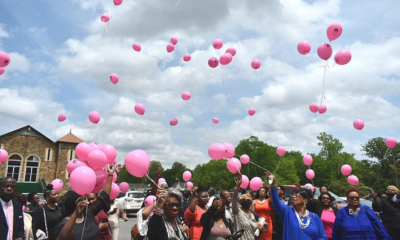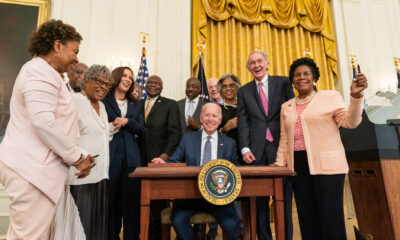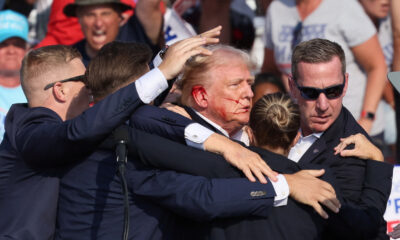Featured
Black and Green: The African American Consumer

In September 2011, Nielsen and the National Newspaper Publishers Association (NNPA) released The State of the African-American Consumer. It was the first of three reports designed to make both corporations and consumers aware of African-American buying power. African-Americans currently having a buying power of $967 Billion and according to the report it is expected to grow to $ 1.1 trillion by 2015.
Converting Power into Influence
Buying power typically has a direct correlation with affluence; as annual income and graduation levels continue to rise in the African-American community so will our influence and power in the marketplace.
Cheryl Pearson-McNeil, the Vice President of Public Affairs and Government Relations at Nielsen said most African-Americans are not fully aware of their buying power. With that in mind, she helped put together The State of the African-American Consumer, but took a different approach than usual: the report focused not only on informing marketers and manufactures, but also educating consumers.
“By also being inclusive of the actual consumer it would help them understand what that power is and hopefully it would help guide them in ways that they could maximize their collective power,” said Pearson-McNeil.
The Facts (from State of the African-American Consumer):
- African-Americans make up 14% of the population. Our buying power will be over $1 trillion, which is a GDP larger than most countries in the world.
- If African-Americans were a country, we would be the 16th largest country in the world.
- The average age of African-Americans is 32.1 with 47% under the age of 35.
- African-American women typically make the household buying decisions for the household and 64% are in the workforce.
- The number of African-American households making $75,000 has increased by 63.9% in the last 10 years, which is higher than average American households overall.
A Changing Culture Means a Change for Corporations
Pearson-McNeil said by 2050, the “minority will be the majority” meaning Hispanics, Blacks, Asians and other minority groups will make up more than 50% of the population. While 2050 may seem like decades away, Pearson-McNeil said minority populations are already very high in some cities, which has pushed companies to look for new ways to tap into the minds of minority consumers.
“They have all enthusiastically embraced the information in the report,” said Pearson-McNeil. “More and more companies are recognizing that the changing face of America is changing to a multi-cultural face.”
Similar to any other demographic group, the African-American consumer is not homogenous. Marketers are encouraged to look at factors such as age, income, education, marital status, as well as the differences, values and preferences between the Gen-X, Gen-Y and baby boomer generations to find better ways to target African-Americans.
“The purchasing behavior of African-Americans has some distinct characteristics that retailers and marketers should identify and use to establish effective market position,” read the State of the African American Consumer report.
The report provided the following facts on where and how we shop compared to the overall population:
- African-Americans make more shopping trips than any other group, but spend less per trip. In a 52 week study, African-Americans took 15.6 trips and spent $21.9 per trip at drugstores compared to Non-African Americans who only took 13.9 trips, but spent $24.8 per trip.
- African-Americans are less “deal prone” and have high brand loyalty.
- African-Americans go to dollar stores, convenience and drug stores more often than grocery stores and supercenters.
- African-American households spend more on ethnic health and beauty care (non-edible category) and frozen meat, poultry and seafood more than any other item.
The State of the African-American Consumer Report (scroll to the bottom of the page): http://www.nielsen.com/africanamerican

-

 Featured10 months ago
Featured10 months agoCalifornia Is the First State to Create A Public Alert for Missing Black Youth
-

 Featured10 months ago
Featured10 months agoAfrican American Leaders Stay the Course Amid Calls for President Biden To Bow Out of Race
-

 Featured10 months ago
Featured10 months agoThe Debate Fallout Lands on Both Candidates
-

 Featured9 months ago
Featured9 months agoPresident Joe Biden Decides to Withdraw from the Presidential Race
-

 Featured9 months ago
Featured9 months agoIn One of His Final Speeches as President, Biden Says It’s Time for ‘Fresh Voices’
-

 Featured10 months ago
Featured10 months agoPresident Joe Biden Describes Shooting of Donald Trump As ‘Sick’

